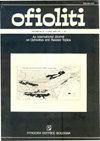意大利南部tethys (fontana valloneto)深水bonarelli等效剖面氧化还原局部变化及沉积条件的地球化学证据
IF 1.3
4区 地球科学
Q2 GEOLOGY
引用次数: 2
摘要
确定沉积氧化还原条件有助于评估海洋缺氧事件(oae)期间气候变化、生物反馈和海洋脱氧过程之间的相互作用。在这里,我们将重点放在意大利南部(Basilicata Potenza)的Fontana Valloneto地层剖面上,该剖面厚约56 m,属于“Flysch Rosso”组,包含与Bonarelli层位相当的地层(全球称为OAE2,发生在~ 94 Ma)。无机地球化学组成和总有机碳含量用于评价沉积环境和氧化还原条件。整个层序内碳酸盐含量少,Y、Zr和Al含量沿剖面逐渐减少,表明沉积环境较深(低于方解石补偿深度),陆源供应总体减少。Bonarelli层(BH-e)的样品显示TOC含量变化很大(~ 0 ~ ~ 30 wt%),这反映了氧化还原敏感元素和营养相关元素(如V、Mo和U)和Mn的变化,表明海水初级生产力的变化与局部氧化还原条件在缺氧到强缺氧之间的变化有关。我们推断,在OAE2时期,黑色页岩的聚集与“缓慢”海洋环流和停滞条件下的高有机质(OM)生产力、高生物成因二氧化硅生产和细粒沉积(主要是风沙和伊利石)有关。这些时期与海洋环流更活跃和径流增强的时刻交替,导致局部沉积TOC含量非常低的放射性放射石。最后,与原大西洋和中生代特提斯的其他剖面的比较支持氧化还原敏感元素(V, Mo和U)的下降是OAE2沉积期间的一个全球性过程,这为我们的剖面检测到的环境变化与海洋缺氧事件期间发展的全球扰动之间提供了联系。本文章由计算机程序翻译,如有差异,请以英文原文为准。
GEOCHEMICAL EVIDENCE FOR LOCAL VARIABILITY IN REDOX AND DEPOSITIONAL CONDITIONS IN A DEEP-WATER BONARELLI EQUIVALENT SECTION FROM SOUTHERN TETHYS (FONTANA VALLONETO SECTION, SOUTHERN ITALY)
Identifying the depositional redox conditions is useful to evaluate the interplay between climate changes, biological feedbacks and de-oxygenation processes in the oceans during the Oceanic Anoxic Events (OAEs). Here, we focus on the about 56 m-thick Albian-Turonian Fontana Valloneto stratigraphic section cropping out in Southern Italy (Potenza, Basilicata), belonging to the “Flysch Rosso” Formation, and containing an equivalent of the Bonarelli Horizon (globally called OAE2 which occurred at~ 94 Ma). Inorganic geochemical compositions and Total Organic Carbon contents obtained from this section are here used to assess depositional environment and redox conditions. The paucity of carbonates within the entire sequence and a gradual decrease in Y, Zr and Al contents along the section suggest a deep depositional environment (below the Calcite Compensation Depth) and an overall decrease in the terrigenous supply. Samples within the Bonarelli Horizon (BH-e) show highly variable TOC contents (~ 0 to ~ 30 wt%) that, mirrored by variations in redox sensitive and nutrient-related elements (e.g. V, Mo and U) and Mn, suggest variation of the seawater primary productivity associated to changes of the local redox conditions between suboxic to strongly euxinic. We infer that during OAE2 the accumulation of the black shales was associated to high Organic Matter (OM) productivity, high biogenic silica production and fine-grained sedimentation (mainly aeolian dust and illite) in a period of “sluggish” oceanic circulation and stagnant conditions. These periods were alternated by moments of more active oceanic circulation and enhanced runoff, leading to the local deposition of radiolarites with very low TOC contents. Finally, a comparison with other section from the proto-Atlantic Ocean and the Mesozoic Tethys sustains the idea that the drawdown of redox-sensitive elements (V, Mo and U) was a global process during the deposition of OAE2, providing a link between the environmental changes detected in our section with the global perturbations developed during this oceanic anoxic event.
求助全文
通过发布文献求助,成功后即可免费获取论文全文。
去求助
来源期刊

Ofioliti
地学-地质学
CiteScore
2.40
自引率
7.70%
发文量
1
期刊介绍:
Since 1976, Ofioliti provides an international forum for original contributions and reviews in the field of the geodynamics, petrology, geochemistry, biostratigraphy, stratigraphy, tectonics and paleogeography applied to ophiolitic terrains and modern oceanic lithosphere, including their sedimentary cover. Studies of topics such as geodynamics of the mantle, the evolution of orogens including ophiolites and paleoceanography are also welcome
 求助内容:
求助内容: 应助结果提醒方式:
应助结果提醒方式:


